Keywords
|
| Artificial Neural Network, Edge detection, Multi-thresholding, Optimal edge detector, Tsallis entropy |
INTRODUCTION
|
| Edge detection is a technique use to highlight those feature points in a digital image where intensity of pixels changes very abruptly. These points are usually boundaries/edges of distinct objects, so this technique is named as edge detection. Edge detection is being employed as pre-processing stage in different application areas like Image Segmentation, Registration, feature extraction, Machine vision etc.Some major challenges faced for the selection of a particular edge detectorare: false detection of edges [1][2], presence of noise[3], low contrast [4] and poor thresholding [5]. Issue of noise and poor contrast can be solved by noise filtering and image enhancement technique respectively. Thresholding plays a vital role in edge detection, as use of single level thresholding of an image leads to the loss of prominent detail. Binarization of input gray scale image f(x, y) by using a single threshold level (T) is given by equation1. |
 (1) (1) |
| On the other hand, Multi-thresholding is a technique which is used to find more than one threshold levels. It helps to minimize the error occurred as compared to single level thresholding. The use of multiple threshold levels say T1, T2, Tn, for Binarization is given by equation 2, where n1,n2…..nm= {0, 1} |
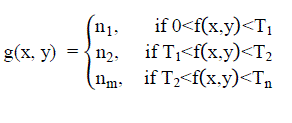 (2) (2) |
| This paper discusses related work in section II. Section III described the proposed edge detection algorithm followed by discussion on results, conclusion and future work in section IV, V and VI respectively. |
RELATED WORK
|
| The classical approach used for detection of edges include Gradient based operators (Sobel, Roberts, and Prewitt), and Laplacianbased (LOG) detectors. Gradient edge detectors are simple to use but very sensitive to noise [6] and thus not suitable for medical image analysis. On the other hand, Laplacianbased filters have better SNR due to Gaussian smoothening[7], [8] but it gives false zero crossing. The kernels used for these operators are shown in figure 1. |
| Apart from the classical detectors, some advanced edge detectors such as, Gaussian based (Canny) and Fuzzy/Neural based edge detectors are also deployed widely in many applications. Canny edge detector is proposed by J. F. Canny in 1986 [9]. It consists of multi-stage procedure for edge detection as shown in figure 2. Canny edge detection algorithm is developed for optimal detection of edges but gives false result at corners and curves. |
| Classical approaches are unable to model complex problems and become ineffective in noise and dynamically changing environment. Over the past years, nature-inspired computational methodologies enable the computer systems to perform reasoning and making intelligent decisions of their own [10]. Thus, some latest edge detectors are developed in recent years with the use of fuzzy logics and artificial neural networks. Fuzzy method deals with reasoning that aims on “approximation” rather than “exact” values. |
| YasarBecerikli et al.[11] proposed a new Fuzzy approach for edge detection. The Proposed rule-based fuzzy algorithm offered easy adaptability to thickness and structure of edges. Results demonstrated better edges in comparison to classical methods like Sobel, Roberts and Prewitt. |
| Jinbo Wu et al. [12] proposed a Fast Multilevel Fuzzy Edge Detection (FMFED) for Blurry Images. The FMFED algorithm first enhances the image contrast by double thresholding and then extracts edges by using gradient values. Results demonstrate better performance in terms of thin and true edges. |
| Kenji Suzuki et al. [13] proposed a Neural Edge Enhancer (NEE) for supervised edge enhancement from noisy images. The network used supervised learning & trained through a set of input noisy images. The comparison demonstrated the superior robustness of neural edge detector to noisy images in comparison to conventional edge enhancers. |
| HamedMehrara[14] proposed a novel edge detection using Back Propagation Neural Network (BPNN). In this technique, the neural network is trained by using 16 possible quad pixels binary images and then implemented on Input Gray scale images after single-level binarization. |
| S Abid et al. [15] proposed novel neural network approach for edge detection. This algorithm used Multilayer Perceptron (MLP) to detect edges in noisy & low contrast gray scale images. Simulated results on synthetic and real images showed promised results in terms of precision & localization. |
| JesalVasavada et.al [16]proposed an edge detection method for gray scale images based on BP Feed-forward Neural Network to detect edges in gray scale images. The network is trained by back-propagation learning algorithm for Standard deviation and gradient values .The proposed scheme reveals better results in comparison to Prewitt, Roberts, Sobel, LOG. |
PROPOSED NEURAL EDGE DETECTOR
|
| The design methodology of proposed edge detector is shown in figure 3.The first and foremost step is to convert the input grayscale image into Binary form by using three threshold levels T1, T2& T3 (as given in eq. 2) which are computed using TsallisEntropy [17] based Multi-Thresholding. |
| Then this Binary image is disintegrate into 3×3 windows and is applied as an input to a Neural Edge Detector which decides that whether the input centre pixel of window is an edge or not, as shown in figure 4. This network is using a supervised back-propagation neural network, which in turn uses delta rule for learning [18].The network structure is 9x5x1 (9 inputs, 5 hidden and 1 outputs). Proposed BPNN is trained with 100 sample images of 3×3 size with learning rate of 0.9 and sigmoidal activation function. Samples are selected in such a way that trained BPNN will also perform accurately to unknown input patterns. |
| Finally, the output images are analysed at various qualitative and quantitative parameters. The results are also compared with the results of traditional & existing neural edge detectors |
RESULTS AND DISCUSSION
|
| In this section, the proposed algorithm is compared with different edge detection Technique like Sobel, Roberts, Prewitt, Canny and General Neural Network (Quad Pixel Neural Network trained for possible 16 pattern [14]) viz Visual inspection, MSE, MAE, and PSNR.Comparison is performed on two different types of test images as shown in figure 5. |
| Figure 6 shows the qualitative comparisons of results obtained for Non-synthetic RGB image through various operators. Qualitative Comparison is done by visually inspecting theedge quality of edge map. |
| Figure 7 shows the qualitative comparisons of results obtained for Medical image through various operators. It is observed that the edge details obtained through proposed technique (refer the edge details of clouds in fig. 6(f) & edge linking of boundaries in fig. 7(f)) is far much better than the other existing techniques. |
| Apart from the qualitative analysis, the quantitative analysis is also compared for both input images at various quality parameters.Figure 8 shows the quantitative comparisons vizMSE, MAE, PSNR obtained for Non-synthetic RGB image through various operators. |
| Figure 9 shows the quantitative comparisons viz MSE, MAE, PSNR obtained for Medical image through various operators. |
| It is clearly observed that the MSE & MAE offered by proposed technique is least in comparison to all other existing traditional & advanced edge detection techniques for both types of input images. Similarly, the PSNR for proposed detection algorithm is highest in comparison to others. |
CONCLUSION
|
| In this paper,a novel edge detection technique based on Multi-Thresholding with ANN is presented. The results obtained through proposed method performs better than various well known conventional edge detection techniques in terms of Quality edges,MSE, MAE and PSNR.The proposed method produces true thin edges, manifesting more detail and the reduction in Mean Square Error (MSE) and Mean Absolute Error (MAE) as compared to competitors are highly commendable.High Peak Signal to Noise ratio (PSNR) of proposed edge detector in both non-synthetic & medical test images clearly demonstrate the superior quality of output edges. |
FUTURE WORK
|
| It is planned to design an optimal neural edge detector that not only performs better on real and medical images but also yields good results in noisy or blur conditions. |
Figures at a glance
|
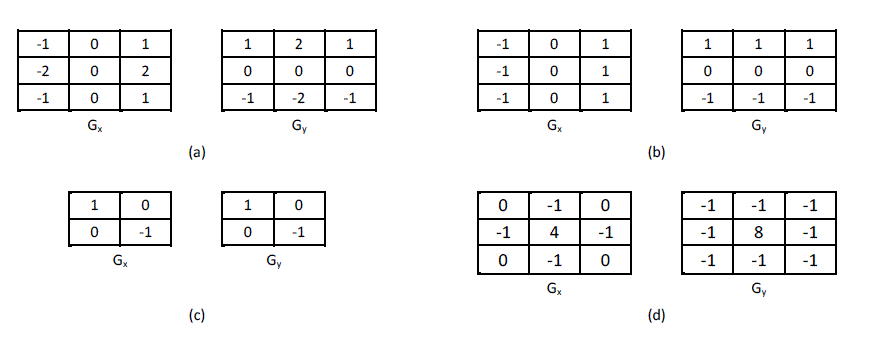 |
 |
 |
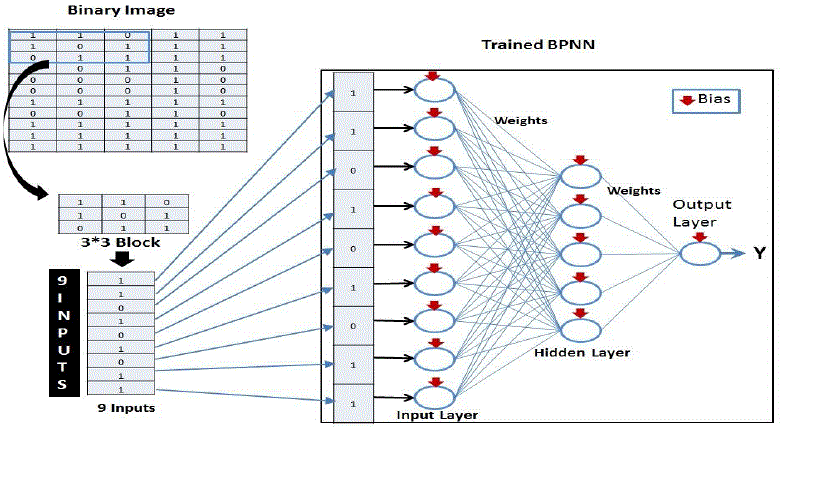 |
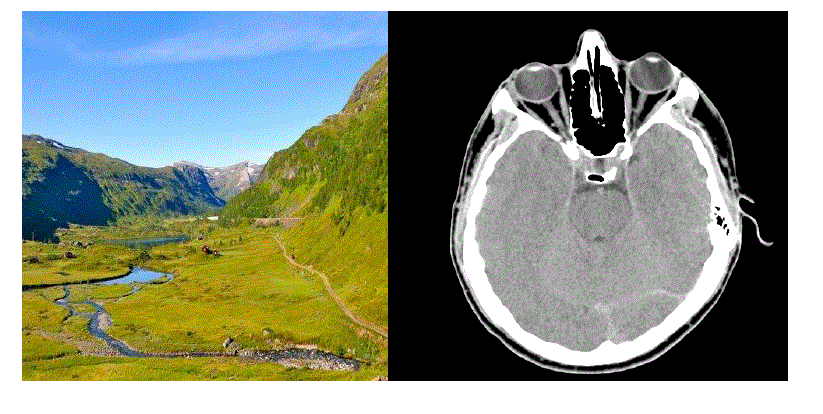 |
| Figure 1 |
Figure 2 |
Figure 3 |
Figure 4 |
Figure 5 |
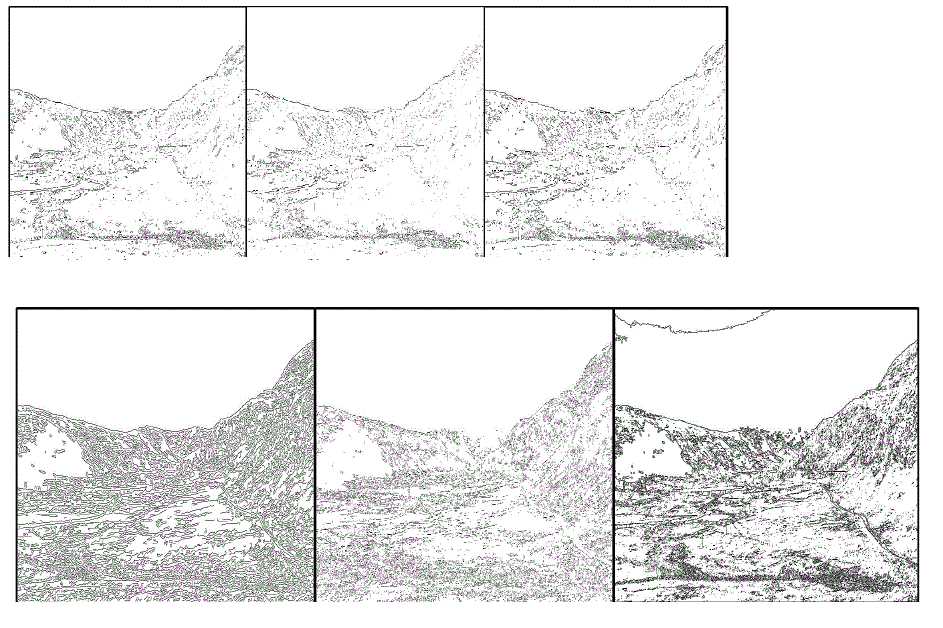 |
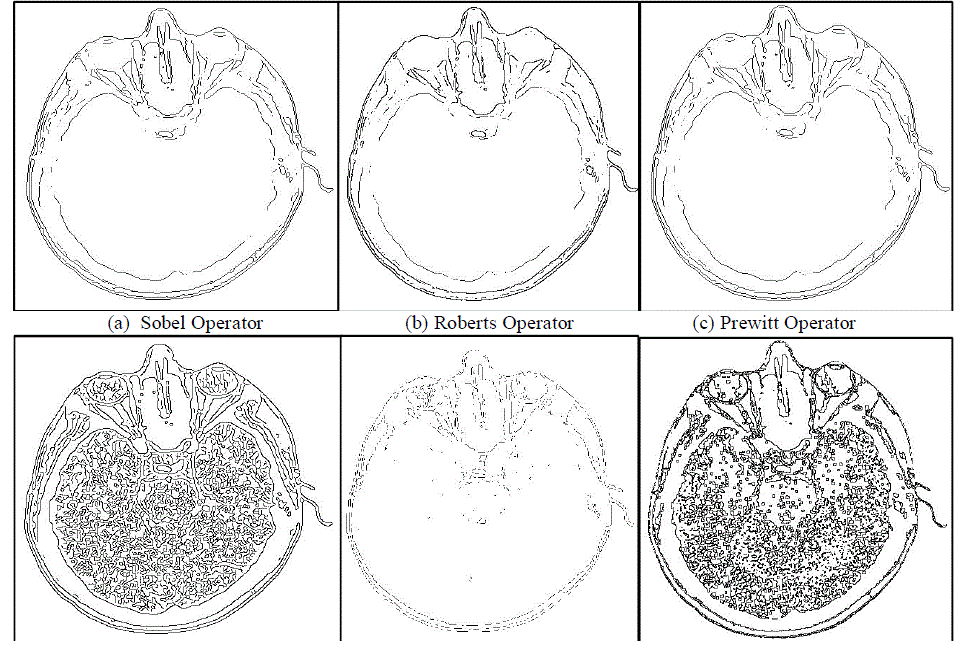 |
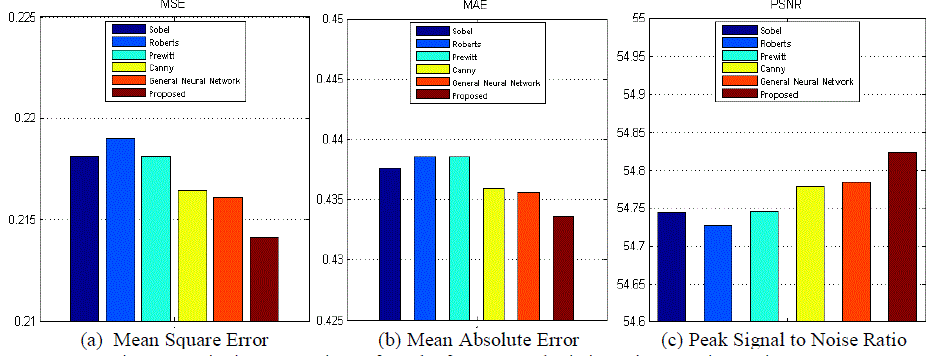 |
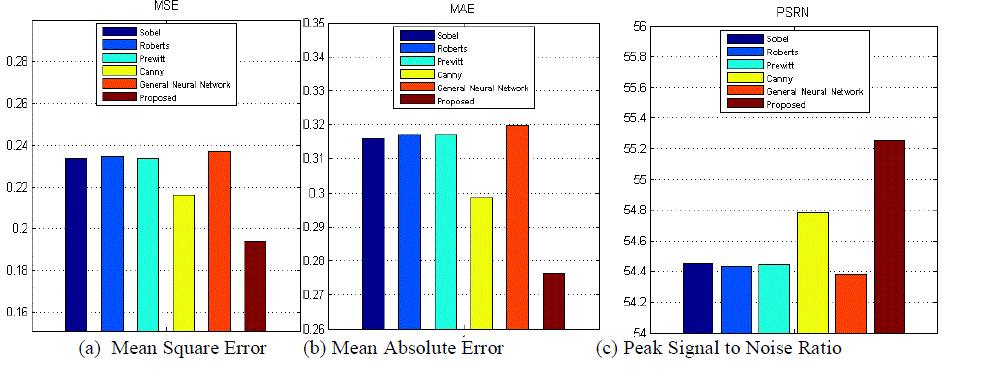 |
| Figure 6 |
Figure 7 |
Figure 8 |
Figure 9 |
|
| |
References
|
- S. Venkatesh, L. J. Kitchen, “Edge evaluation using necessary components,”CVGIP: Graphical Models and Image Processing, vol. 54, pp. 23–30, 1992.
- I.E. Abdou,W. Pratt,”Quantitative design and evaluation of enhancement/thresholding edge detectors,” Proceedings of the IEEE ,Volume 67,Issue 5 ,pp. 753 – 763,2005.
- H. Farahanirad, J. Shanbehzadeh, M. M. Pedram, A.Sarrafzadeh,”A Hybrid Edge Detection Algorithm for Salt and Pepper Noise,” Proceedings of the InternationalMultiConference of Engineers and Computer Scientists (IMECS), vol I, pp 16-18, 2011.
- Zhang Xuming, Yin Zhouping ,XiongYoulun, “Edge Detection of the Low Contrast Welded Joint Image Corrupted by Noise,” IEEE 8th International Conference on Electronic Measurement and Instruments,pp. 2-876 - 2-879, 2007.
- Mohamed A. El-Sayed,” A New Algorithm Based Entropic Threshold for Edge Detection in Images,”International Journal of Computer Science Issues (IJCSI), Vol. 8, Issue 5, No 1, September 2011.
- G.T Shrivakshan, Dr Chandrasekhar, “A comparison of various edge detection techniques used in image processing,” International Journal of Computer Science Issues, Vol. 9, Issue 5, pp 269-276, September 2012.
- Haralick, R.M, “Comparing the laplacian zero crossing edge detector with the second directional derivative edge detector,” Proceedings. Of IEEE International Conference on Robotics and Automation, volume 2, pp 452-457,1985.
- VineetSaini, RajnishGarg, “A Comparative Analysis on Edge Detection Techniques Used in Image Processing,”IOSR Journal of Electronics and Communication Engineering (IOSRJECE), Volume 1, Issue 2, pp. 56-59, May-June 2012.
- J.F. Canny, "A computational approach to edge detection," IEEE Transactions on Pattern Analysis and Machine Intelligence (IEEE TPAMI), Vol. 8(6), pp. 769-798, 1986.
- Sidra Naeem, SajidSiraj,”A Framework to Select Edge Detection Method using Multi-criteria Decision Making,” IEEE International Conference on Systems, Man, and Cybernetics, pp.730–735, 2013.
- Y.Becerikli and T. M. Karan, “A new fuzzy approach for edge detections,” The International Work-Conference on Artificial Neural Networks (IWANN), LNCS 3512, pp. 943–951, 2005.
- Wu, Jinbo, Zhouping Yin, and YoulunXiong. "The fast multilevel fuzzy edge detection of blurry images,"IEEE Signal Processing Letters, vol. 14, no. 5, May 2007
- Kenji Suzuki, Isao Horiba, Noboru Sugie, " Neural Edge Enhancer for Supervised Edge Enhancement from Noisy Images," IEEE Transactions On Pattern Analysis And Machine Intelligence, Vol. 25, No. 12, 2003.
- HamedMehrara , Mohammad Zahedinejad, “Quad-pixel edge detection using neural network,” Journal of Advances in Computer Research, pp.47-54,2011.
- Abid, Sabeur, FarhatFnaiech, and Ezzeddine Ben Braiek. "A novel neural network approach for image edge detection," IEEE International Conference onElectrical Engineering and Software Applications (ICEESA), pp 1-6,2013.
- JesalVasavada, ShamikTiwari, “An Edge Detection Method for Gray scale Images based on BP Feed forward Neural Network,” International Journal of Computer Applications (0975 – 8887) Volume 67– No.2, 2013.
- Mohamed. A. El-Sayed,S. Abdel Khalek, Eman Abdel-Aziz, “Study of Efficient Technique Based On 2D TsallisEntropy For Image Thresholding,” International Journal on Computer Science and Engineering (IJCSE) Vol. 3 No. 9 September 2011.
- D.E. Rumelhart, G.E. Hinton, R.J. Williams, “Learning Representations of Back-Propagation Errors,” vol. 323, pp. 533-536, 1986.
|